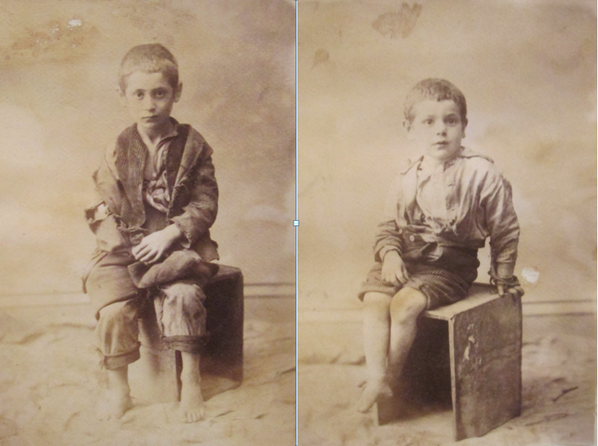A Russian connection
The vast majority of children who entered the Manchester and Salford Boys’ and Girls’ Refuges and Homes were from Manchester and the surrounding areas. The charity began with the intention to take boys, and later girls, out of the city slums and give them safe, warm accommodation, where they could learn a trade and create a better life for themselves. A look at the admission books for the charity however, revealed that it was not just Mancunians who passed through the Refuge door.
Of course Manchester appealed to people from all over. The Industrial Revolution meant people had swarmed to the cities looking for work. Certain areas therefore became well known as settlements for different nationalities. Ancoats, for example, became well known as ‘Little Italy’, as poverty caused many Italians to move away from their homeland. Ancoats was also home to a large population of Irish workers, many of whom lived in the cellars of the small, cramped houses. Up in Salford and Prestwich, people settled from Central and Eastern Europe and Russia. It is from this area we take out next story.
Philip and Samuel entered the Refuge in 1894 at the tender ages of 9 and 5. They were admitted in what was described as a ‘neglected’ condition from one of the lodging houses in Long Millgate (next to Manchester Victorian Station). Although the children were born in Manchester (Samuel within the cold, unforgiving walls of the workhouse) the family hailed from Russia originally. Two years previously, Philip and Samuel’s father had abandoned the family leaving his wife with two small children. There were no other relatives in England with only a Grandfather in Germany and Uncle in America, being mentioned on the boys’ application form.
The family had subsequently been in and out of Crumpsall Workhouse or staying in lodging houses. The mother was a laundress but struggled to work with two young boys. The boys, with the mothers consent, were admitted to the Boys’ Brigade Home, on Great Ducie Street with the intent to later move to the Emigration Training Home.
However, in April 1895 a letter remains within the archive revealing the fate of these two boys. Written by the Board of Guardians for the Relief of the Jewish Poor of Manchester, it reveals plans to send the family back to Russia. It is unknown whether this was by request of the Mother or whether it was deemed within her best interests by the Board of Guardians. It is however, quite unusual to have family images within the charity’s photograph albums. The boys left in a new outfit, which made a great contrast to the rags that they were admitted in, to start a new life in Russia.
Of course Manchester appealed to people from all over. The Industrial Revolution meant people had swarmed to the cities looking for work. Certain areas therefore became well known as settlements for different nationalities. Ancoats, for example, became well known as ‘Little Italy’, as poverty caused many Italians to move away from their homeland. Ancoats was also home to a large population of Irish workers, many of whom lived in the cellars of the small, cramped houses. Up in Salford and Prestwich, people settled from Central and Eastern Europe and Russia. It is from this area we take out next story.
 |
|
Philip
and Samuel on admittance
|
The family had subsequently been in and out of Crumpsall Workhouse or staying in lodging houses. The mother was a laundress but struggled to work with two young boys. The boys, with the mothers consent, were admitted to the Boys’ Brigade Home, on Great Ducie Street with the intent to later move to the Emigration Training Home.
 |
Before returning to Russia |

Comments
Post a Comment
Like to know more about a certain home or period in the Together Trust's history? Why not comment and let us know.
If you have a personal or more specific enquiry please see our 'Contact Us' section at the top of this page to get in touch via email.